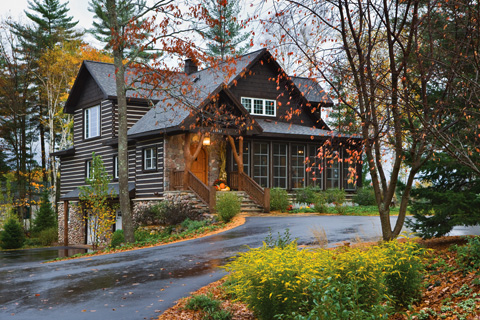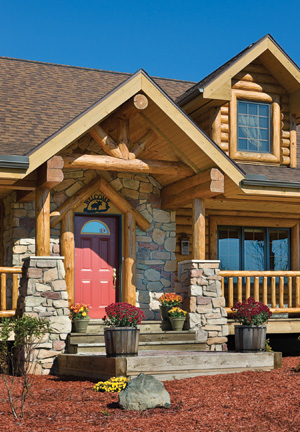While all stains and finishes are regulated by the U.S. Environmental Protection Agency, “green” stains have exploded onto the market during the past decade, offering an attractive alternative for environmentally conscious homeowners. These water-based products often perform as well as their oilbased counterparts. However, interior designer Stephanie Hintz of Wisconsin Log Homes points out that some oil-based stains also are kind to the earth.
“In some water-oil emulsions, the oil is solvent—or petroleum-based—while some oil-based stains [have] formulas that use natural oils instead of solvents,” Hintz explains. “Not all oils are bad, and not all waters are good.”
For the DIY stainer, oil-based stains may be easier to apply because they dry more slowly and tend to leave less “lap marks,” Hintz says. On the other hand, water-based acrylic stains dry faster, are easy to clean with soap and water, and are ideal for cedar homes, she adds. “If you use a water-based formula, darker shades are best. Water-based stains fade out with the sun; each subsequent coat will bring it closer to its original stain color.”
The stain industry also is producing more stain systems that contain low or no VOCs (volatile organic compounds). These emit fewer harmful chemicals into the environment. And another all-green offering: CTA Products Group, based in Olive Branch, Mississippi, manufactures a natural insect repellant additive for stains.
“It provides a time-released insect barrier for the outside of the home,” explains Barbara Murray, president and owner of the company. “It leaves no poison on the surface of the house or in the yard. It’s an exciting product.” When it comes to stains, there are hundreds of choices. Ultimately, it’s up to the homeowner to decide how green to go. The best solution, experts say, is to do your research to find a reputable product that is proven to perform well over time.
Photography by Roger Wade Studio


